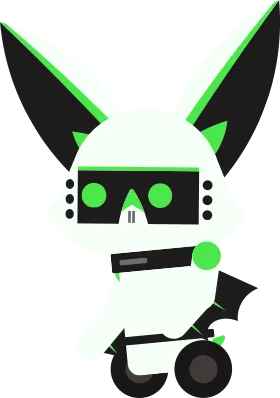Behold, a deliberately provocative, clickbait title! Sorry about that, but the general notion holds true—when it comes to good accessibility practice, a lot of websites produced by the furry fandom are hot garbage.
In my experience this is true of everything from established art galleries, to social media services and convention sites. Many of them have fundamental accessibility issues that make them anywhere from unpleasant to impossible for assistive technology users to actually use.
This isn’t surprising
The furry fandom is an entirely homegrown one with no central authority and no corporate approval or funding. This is actually not very common! My Little Pony fan works are frequently hit by cease and desist orders; Star Trek conventions have to get approval from CBS if they want to use the brand, and they still have to compete with CBS’s official events; almost every fandom has to skirt the legalities of copyright and trademark law when creating even the most simple of fan works.
The furry fandom, by comparison, is anarchy. Anybody can make a website, convention, fanzine, podcast, game, book, or whatever, provided they put the effort in and have enough skill to get the ball rolling and get others on board. No corporate approvals needed, no trademarks to breach, no legalese to wrap heads around.
As a consequence, pretty much every major website and app in the furry fandom is bespoke-built, maintained, managed and funded by unpaid volunteers.
That is also the problem

The frequent (though by no means universal) lack of professional experience, legal knowledge, or managerial mandates to do-it-right-or-you’re-fired means that a lot of these websites are… kind of a mess. They do what they were designed to do, sure, but they were only built for what they were designed to do. A sighted user with a mouse might be able to upload an image and view it in their gallery—but that doesn’t mean that a screen reader user using a keyboard can.
No managers, no lawyers, no user experience researchers, no QA testers. These projects move fast, but they also break things.
Combined with the churn associated with these volunteer-run projects—it’s not uncommon in the furry fandom for a project’s initial staff to have moved on within a few years—accessibility is usually only considered for the most visible situations (“does the convention hotel have wheelchair ramps?”), seldom considered when it comes to websites, and in the rare cases where someone, at some point made an effort to do it well, that knowledge has often been lost over time.
The furry fandom is no stranger to disabled, neurodivergent and minority people. For many, the inclusive nature of the furry fandom and the pseudo-anonymity afforded by having a fursona is a comfort and an escape from potentially difficult life circumstances; yet many furry fandom spaces, through ignorance rather than malice, will force these people into difficult to unusable experiences.
Let’s do something about it

I hate complaining about stuff and not offering a fix. So here’s a fix:
If you’re involved in running a website aimed at the furry fandom, and want to ensure it’s accessible, or would like help making sure it is, contact me and I’ll help, for free.
For existing projects, this will be in the form of a time-boxed audit of your existing website, noting areas where they fail to meet the Web Content Accessibility Guidelines and making suggestions for remediation. We’ll discuss how we continue from there.
If your project is open-source and hosted on GitHub, I might even make some improvements myself. 😉
Let’s make our community websites better, together.